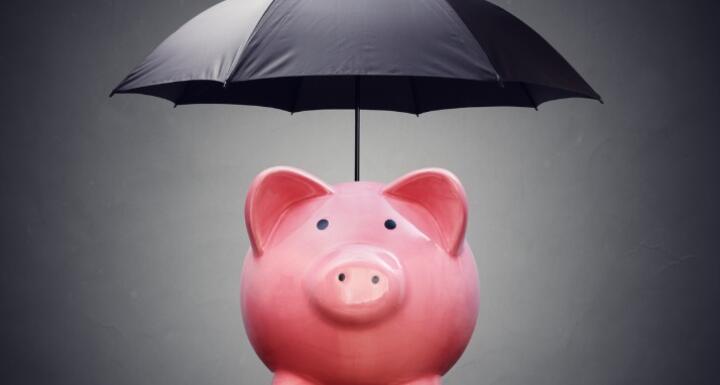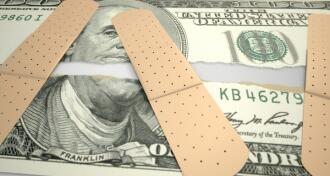
We've been sharing client alerts and articles about the passage of the CARES Act in the wake of the COVID-19 crisis.
Among other things, the CARES Act allocates federal funds towards making small business loans available to eligible applicants. The CARES Act became law on Friday, March 27, 2020, and lenders across the country are gearing up to be in a position to accept and process those loan applications beginning April 3, 2020. Lenders are continuing to collect additional guidance from the Secretary of the Small Business Administration so that they can answer nuanced questions that arise from unique borrower entities, and actually process loan applications.
Here we will address frequently asked questions we are receiving from our business and lending clients about the Paycheck Protection Loan Program ("PPP") created by the CARES Act and the Economic Injury Disaster Loans ("EIDL"). These programs are different, and we will highlight the most important differences.
PAYCHECK PROTECTION PROGRAM FAQ:
What is the Paycheck Protection Program (PPP)?
The PPP is a loan program that allows an eligible borrower to obtain a loan to cover payroll, rent, mortgage interest, and utilities paid out during the Covered Period (February 15, 2020 - June 30, 2020). The most exciting part of the PPP is that the federal government can pay up to 100% of the loan if the borrower spends the loan proceeds in certain ways.
Where can I apply?
Contact your existing lender or the lending institution where you maintain your bank accounts and may have existing loans. Many participating lenders are only accepting applications from applicants who are existing customers. Some lenders are accepting paper applications, but many are accepting applications through their online portals.
When can I apply?
Small businesses and sole proprietorships can apply starting today, Friday, April 3, 2020. Independent contractors and self-employed individuals can apply starting Friday, April 10, 2020. Many lenders have issued updates today, stating that they will not be prepared to begin processing loan applications until Monday, April 6, 2020.
So far, applications will be accepted through June 30, 2020, or until the $349 Billion in federal funds allocated for this program are exhausted. This program is "First Come, First Served."
Who is eligible to apply for a PPP?
The Applicant must have been in operation for business on or before February 15, 2020, and had employees (including the business owner(s)) for whom it was paying salaries and payroll taxes. Additionally, the Applicant must be one of the following:
- A business organization with no more than 500 employees, whose principal place of residence is in the United States; OR certain hospitality businesses operating under NAICS code prefix 72 with more than 500 employees (Businesses should confirm their NAICS code.)
- A tax-exempt organization that is classified as 501(c)(3) nonprofit, 501(c)(19) veteran's organization, or 31(b)(2)(C) Tribal business concern. Note that other nonprofits, such-as 501(c)(6) trade associations, are NOT eligible for PPP loans.
- An independent contractor
- A sole proprietor
- A self-employed individual
Be aware that two or more businesses with fewer than 500 employees but common control might be affiliated under SBA rules. An affiliation of multiple companies can exceed the 500 employee limit. More information on this affiliation problem is here.
What information should I gather in order to apply for a PPP?
An applicant must have evidence of paying payroll or self-employment taxes in order to apply. The following information will likely be required:
- 2019 IRS Quarterly 940, 941, or 944 payroll tax reports
- Payroll reports for a 12 month period (ending on your most recent payroll date), which show: Gross wages (salaries, wages, cash tips, commissions) for each employee (including officers if paid W-2 wages), payment for paid time off, vacation, parental, family, medical, or sick leave, and state and local taxes assessed on each employee's compensation
- Documentation showing all health care premiums paid by the business (include all employees and company owners)
- Documentation of all retirement plan funding paid by the business for all employees and company owners on 401Ks, Simple IRAs, and SEP IRAs (Note, do not include funding that came from employees out of their paycheck deferrals)
- Independent Contractors need to submit their 1099's in order to apply for a PPP.
- Borrowers who do not have any of this documentation should provide supporting documentation, such as bank records, sufficient to demonstrate the qualifying payroll amount.
- Documentation requirements will depend in large part on the lender's determination.
Do Independent Contractors count as employees for purposes of PPP calculations?
No. Independent Contractors have the ability to apply for their own PPP loan on their own and do not count for purposes of a borrower's PPP loan calculation.
What Is the Maximum PPP loan amount I can receive?
The maximum loan size is the lesser of $10,000,000 OR 2.5x average monthly payroll costs.
Generally, payroll costs are averaged over the 12 months prior to the loan application. Some businesses, such as seasonal or new businesses, are allowed an alternative calculation. You should review the SBA's rules for specific details about payroll costs.
Payroll costs are: compensation to employees (whose principal place of residence is the United States) in the form of salary, wages, commissions, or similar compensation; cash tips or the equivalent (based on employer records of past tips or, in the absence of such records, a reasonable, good-faith employer estimate of such tips); payment for vacation, parental, family, medical, or sick leave; allowance for separation or dismissal; payment for the provision of employee benefits consisting of group health care coverage, including insurance premiums, and retirement; payment of state and local taxes assessed on compensation of employees; and for an independent contractor or sole proprietor, wage, commissions, income, or net earnings from self-employment or similar compensation.
The following formula will generally apply:
- Add together all payroll costs from the last 12 months; then
- Subtract any compensation paid to any employee in excess of an annual salary of $100,000; then
- Divide that number by 12; then
- Multiply by 2.5; then
- Add the outstanding amount of any non-forgivable EIDL made between January 31, 2020, and April 3, 2020 (if any).
What are General PPP loan terms?
- Interest rate will be 1.0% on all Paycheck Protection Loans
- Up to 8 weeks of covered expenses can be forgivable by SBA
- No collateral will be required
- No personal guarantees will be required
- Any amount that is not forgiven will be paid back to the lender over a 2 year period;
- The first payment due on the amount that is not forgiven, can be deferred for six months;
- Loan proceeds can be used for payroll costs mentioned above, rent and utility payments, interest on mortgage payments, and interest payments on any other debt obligations incurred before February 15, 2020.
Will all or a portion of my PPP be forgiven?
All of the loan proceeds used toward certain payroll costs should be forgiven. Payments used towards utilities, rent, interest on mortgage payments, and interest on debt obligations existing before February 15, 2020, should be forgiven at least in part. SBA has indicated that not more than 25% of the forgiven amount may be for non-payroll costs.
Any expenditures made for overhead, costs, etc. outside of the uses mentioned above will not be forgiven.
Additionally, the forgiven amount will be reduced where the number of employees employed during the loan period is less than the number of employees that were employed February 15, 2019 - June 30, 2019 OR January 1, 2020 - February 29, 2020.
The loan forgiveness amount is also going to be reduced by the amount of any reduction in total salary or wages of any employee during the Covered Period, that is more than 25% of the total salary or wages of the employee during the most recent full quarter during which the employee was employed before the loan was received. The exception here is that if the borrower reduced its staff or their wages between February 15, 2020 and April 26, 2020, the amount of loan forgiveness will not be reduced if the borrower eliminates the reduction in employees or salaries and wages by June 30, 2020.
Take this example: A business borrows $120,000, and of that, $20,000 is spent on documented utility and rent costs and $100,000 is paid towards payroll costs during the 8 week period. The business has 10 employees on payroll during the 8 weeks following the date loan proceeds were received, but had 15 employees on payroll between February 15, 2019 - June 30, 2019.
No employee received less than 75% of his or her regularly paid wage during the Covered Period.
In this case:
($100,000 expended on payroll) x (1 - 10/15) = $33,333
$33,333 is the amount of the loan that is not forgiven. That $33,333 will be payable in monthly payments of Principal and Interest over a 2 year period, at 1.0% interest, with payments starting 6 months after the loan proceeds were received.
$86,667 is the total forgiven amount. The $66,667 of the amount used towards payroll costs will be forgiven, along with the $20,000 used for non-payroll costs, because it does not exceed 25% of the total $86,667 that is forgiven.
Is Loan Forgiveness Automatic?
No. The Borrower will need to submit an application to the Lender that includes:
- Documentation verifying number of employees on payroll and pay rates during the Covered Period;
- State income, payroll, and unemployment insurance filings;
- Cancelled checks, payment receipts, account transcripts, or other documents verifying payments on covered mortgage, lease, and utility payments
Lenders will have to respond to the forgiveness application within 60 days of submission. Note that in an effort to get these loan proceeds in the hands of American business owners immediately, the PPP loans are being issued before SBA has had the opportunity to issue complete guidance on the loan forgiveness aspect of these loans.
Is Loan Forgiveness Taxable?
Forgiven loan amounts under the Paycheck Protection Program are excluded from gross income and will not be taxable as income.
Can I hire someone to assist me?
Borrowers can hire attorneys, accountants, consultants, loan brokers, and other representatives to assist them in the loan application process. The legislation provides that approved fees payable to such attorneys ("Agent Fees") will be payable by the lender out of fees the lender receives from SBA. Agent Fees must be reasonable, and are capped at 1% of a loan for $350,000 or less, 0.5% for loans exceeding $350,000 and less than $2million, and 0.25% for loans of at least $2million. Lenders pay these Agent Fees out of loan processing fees payable by SBA to the lender.
Will these Paycheck Protection Loans be sold?
Yes, lenders will have the option of (a) selling the PPP on the secondary market, or (b) requesting that the SBA purchase the expected forgiveness amount of one or more PPLs at the end of week seven of the Covered Period. Whether or not a loan is sold will not affect a borrower's ability to seek loan forgiveness and will not affect a borrower's obligation to repay any amount that is not forgiven.
What is an Economic Injury Disaster Loan (EIDL) and how is it different from a PPP?
An EIDL can provide up to $2million of financial assistance to an applicant, with properly demonstrated need and collateral. These loans are open to small businesses, most nonprofits, sole proprietors, independent contractors, and cooperatives, ESOPS, and tribal small businesses with fewer than 500 employees. Loan funds can be used for a wide array of capital needs, such as working capital, refinancing existing debt, overhead expenses, payroll costs, etc. There are no upfront loan fees or prepayment penalties.
Currently, an applicant can apply for an EIDL loan and simultaneously request a $10,000 EIDL' advance grant' that is forgiven, whether or not the underlying EIDL loan application is approved.
The benefit to an EIDL as compared to a PPP, is that the loan amount can be up to $2million, and is not limited by the payroll cost calculations applicable to PPLs. Furthermore, they can be used for a wider range of purposes.
However, with the exception of any $10,000 advance grant, EIDLs must be paid back at 2.75% -3.75% (based upon the interest rate applicable to the type of borrower) over 10-30 years, and will require collateral for loans over $25,000 and personal guarantees for loans of $200,000 or more. Payments on these loans can be deferred for up to one year.
EIDLs are applied for directly through the SBA, at https://covid19relief.sba.gov/#/
Can a borrower apply for a PPP and a EIDL?
Yes. The legislation is intended to allow both loans at once, but the loan funds must be utilized for different purposes. If an EIDL loan was received between January 31, 2020, through April 3, 2020, and not used for payroll costs (i.e it was used for working capital, or to refinance existing debt, etc), it does not affect eligibility for a PPP. If the EIDL was used for payroll costs, the PPP must be used to refinance the EIDL loan.'
Stay Tuned
This information is being provided to you so that you can be prepared to apply to one or both of these loan programs, beginning today. Again, lenders are still waiting on final guidelines from the Small Business Administration, and what additional documentation borrowers might need to present in support of their applications. Therefore, many participating lenders may not feasibly be able to process your applications until Monday, April 6. Additional legislation is also expected during this critical time, and we will continue to update you as we learn more from our borrower, lender, and legislative contacts.
--
© 2024 Ward and Smith, P.A. For further information regarding the issues described above, please contact .
This article is not intended to give, and should not be relied upon for, legal advice in any particular circumstance or fact situation. No action should be taken in reliance upon the information contained in this article without obtaining the advice of an attorney.
We are your established legal network with offices in Asheville, Greenville, New Bern, Raleigh, and Wilmington, NC.









